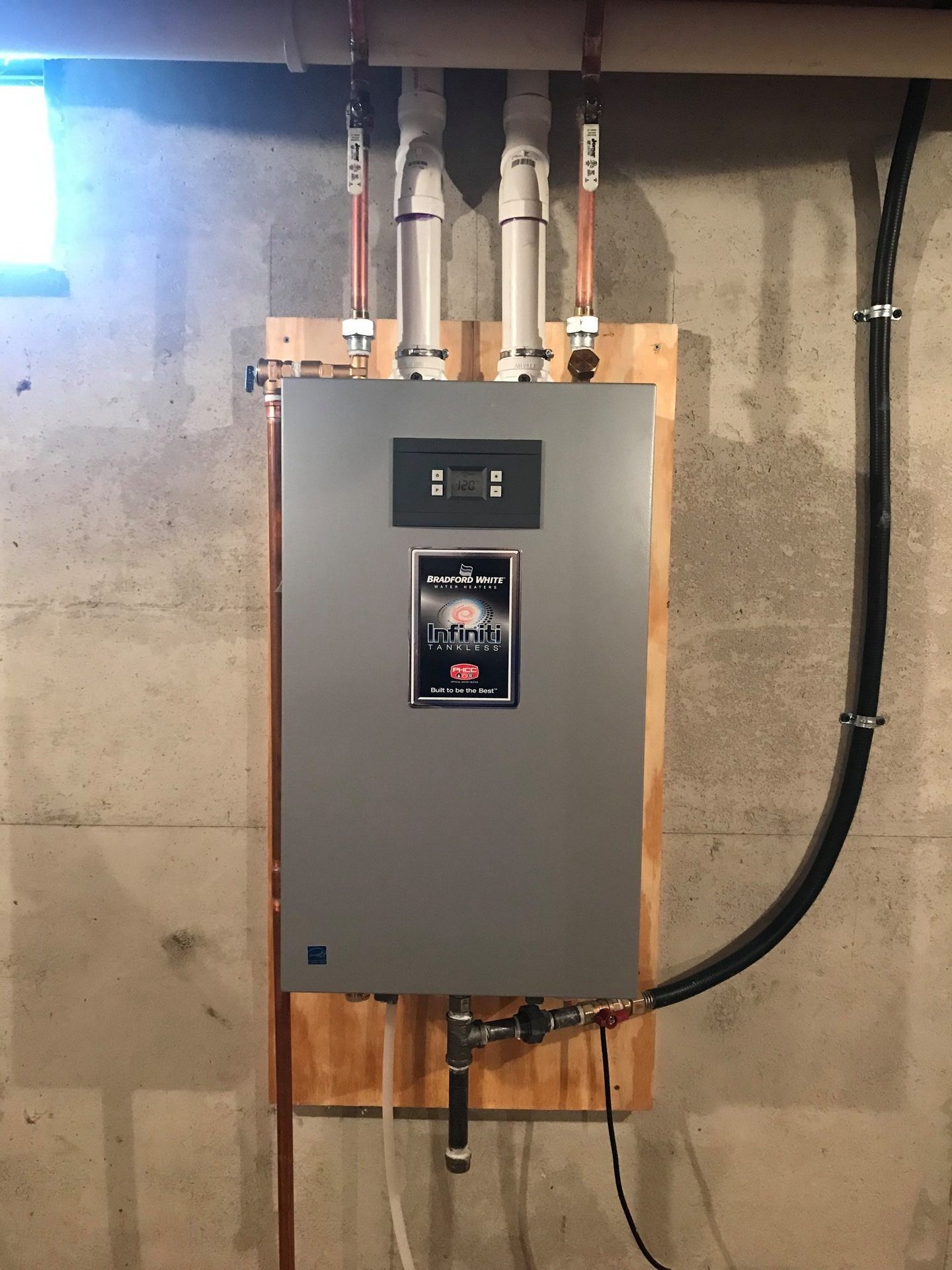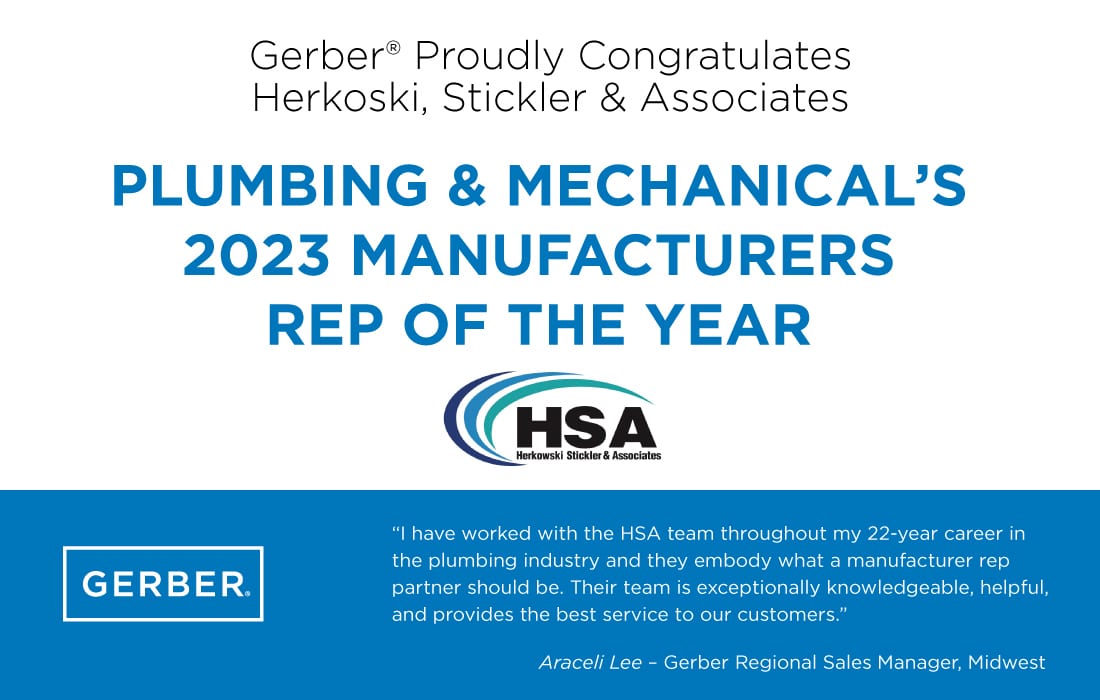Demand for residential tankless water heaters heats up
Demand for residential tankless water heaters heats up
Manufacturers are simplifying installation and troubleshooting on tankless products for plumbers.
The residential tankless water heating market continues to see changes and expanding regulations driving the need for improved efficiency.
The residential tankless water heating market continues to see changes and expanding regulations driving the need for improved efficiency.
Manufacturers are simplifying installation and troubleshooting on tankless products for plumbers.
BY NICOLE KRAWCKE
The demand for tankless water heaters is increasing as the plumbing industry and federal and state governments strive toward energy efficiency. According to a report form Grandview Research, the tankless water heater market is projected to reach USD 6.8 billion by 2030, with a compound annual growth rate (CAGR) of 8.7% during the next seven years.
“There has been a growth of understanding and acceptance by the trades about tankless,” notes David Hoskyn, Navien product management director. “Even with all the information available now to the public, the contractor’s recommendation typically results in the end user’s choice of product. A better understanding of any product’s features, benefits and also limitations make the contractor more willing to promote a product, and tankless has benefitted due to that.”
Similar to many other markets, the residential tankless water heater market continues to see changes and expanding regulations, explains Renee Eddy, vice president of innovation, Rinnai America Corp.

Bradford White’s Infiniti tankless water heaters feature top water connections, making it easier to retrofit from an existing tank; flexible venting; and larger boxes to make it easier to work on.
“These changes are driving the need for improved efficiency,” she says. “In parallel with that, states — California, Washington, New York, etc. — have been aggressively adopting decarbonization strategies. Rather than rolling these out at the state level, they come out at the city level and can vary by county within the same state. The result is a very confusing regulatory and rebate landscape.”
Dongtaek Lee, senior product manager, specialty products, Bradford White Corp., notes that an increasing number of manufacturers are introducing models with integrated recirculation pumps into the gas tankless market. “The recirculation feature meets the market’s demand for water conservation and fast hot water delivery. As a result, we see the market transitioning to those types of products. Also, many non-recirculation models now feature the ability to control an external circulation pump.”
Lee adds that the increase in decarbonization policies is also increasing homeowners’ interest in electric tankless products, and Bradford White anticipates growth in the residential electric tankless market in the foreseeable future.
Decarbonization and electrification drive market forward
Ashley Pincott, senior product marketing manager, Rheem Water Heating Division, notes that electrification is a huge trend in the water heater market, and it’s not slowing anytime soon.
“With more homeowners shifting to electric, and with new energy efficiency regulations and building codes, the water heating industry is rapidly expanding to provide different solutions,” she says. “The versatility that electric water heaters provide is driving the electrification trend. The units can be installed in a variety of locations near the point of use without the need for venting or a gas line and can supply hot water to various housing types ranging from apartments to houses.”

The Noritz EZ Series of high-efficiency, condensing tankless water heaters are designed to cut installation time and cost when replacing larger, storage tank-type units.
Jason Fleming, executive vice president and general manager of Noritz, also points to the market changing due to a continued push for higher efficiency. “As we saw at the AHR Expo this year, heat pumps are trending strong right now. The government and the city/state/national push for electrification drive this trend, forcing consumers and manufacturers to strive for higher-efficiency products and solutions. We have also seen an increase in rebate amounts and availability to utilize high-efficiency products like tankless water heaters.”
Additionally, as the cost of items across peoples’ lives continues to rise, homeowners are looking for additional areas to save money, Eddy explains.
“Let’s take for example the cost of food — in 2022, it increased by an average of 9.9% with the majority of the increase coming from food at home — 11.4%,” she says. “With day-to-day costs continuing to increase consumers are looking for ways to save money. High-efficiency tankless water heaters save money and water.”
Mixed market
According to Pincott, the residential tankless water heater market is growing without a doubt.
“With the momentum behind electrification and new whole-home energy efficiency standards, it is driving more demand for an array of residential tankless water heater solutions,” she says. “There are several factors driving the adoption of tankless in the residential market, most notably, state-level regulations pushing towards electrification. California is leading this trend with New York following closely, passing energy regulations that accelerate the implementation of super high-efficiency water heaters.”
Hoskyn agrees, saying better contractor and end user acceptance of the product, along with improvement in controls and product features are helping push adoption.
“In addition, over the last three to four years, consumers that were home during COVID updated or remodeled their homes at a higher rate,” he explains. “Gaining the benefits of tankless, such as endless hot water became very appealing. Additionally, the space-saving versus a tank helped move installations on remodeling jobs over to tankless.”
Meanwhile, Fleming notes he has seen a slight decline in the market over the past few months.

Newly designed from the inside out, Rinnai’s RE Series tankless water heaters are smarter than ever, the compnay says. The new models feature easier and faster installation and enhanced serviceability.
“This has much to do with tightening wholesaler inventory levels and the overall concern of recession from the wholesalers, contractors and consumers,” he notes. “As the economy improves and the home-building market opens up, more opportunities for continued and sustained growth for residential tankless will emerge.
“Tankless is an accepted alternative to conventional storage-tank units,” Fleming continues. “They have proven themselves over the past 20 years to be a more than a viable solution with high efficiency and setting a new standard for performance. I think rebates are a good contributing factor. Much like the incentives we’ve seen in the past few years regarding electric vehicles, we’re seeing the same for tankless.”
Lee agrees, saying the 2022 overall gas tankless market decreased around 7.5% compared to the previous year; however, the high-efficiency condensing tankless segment continues to grow.
“Energy use with a tankless water heater is based on hot water demand in comparison to a traditional tank water heater, making it an appealing choice for homeowners. Also, utility companies offering homeowner incentives on high-efficiency gas tankless water heaters, as well as longer standard warranty coverages, is another reason why homeowners may choose a gas tankless water heater for their next product purchase.”
Barriers to adoption
As with any newer technology, both the plumbing industry and end users can be slow to embrace change. Pincott notes one of the barriers to the adoption of residential tankless water heaters is the electrical panel size in older homes.
“Tankless water heaters require a certain level of electrical supply, and older homes with 100 amp service panels may not have enough electrical service for a tankless water heater in addition to other home requirements,” she explains. “Newer homes are being built with 400 amp service, perfect to support tankless electric water heaters.”
Fleming points to the cost of installation as one of the greatest barriers to adoption.
“As costs continue to rise, we see hesitation from consumers on excess spending,” he says. “We have made the installation process easier and less costly by the launch of our EZTR (EZ Tank Replacement) and EZ series products.”
Hoskyn agrees, noting the cost of installation is definitely a barrier, although the gap from tank to tankless installations has been reduced. “Another issue may simply be that tankless cannot be installed due to gas or venting issues. Currently, the biggest challenge is the electrification movement in the U.S. and Canada. Navien is committed to producing products that operate at high efficiency, with low emissions, but in some areas that are banning natural gas installations, significant concerns exist over what products an end user will be able to choose for their home in the future.”
Lee notes that because most tankless water heaters require additional maintenance, it has led to some hesitation in marketplace adoption.
Eddy points to training and knowledge as the biggest barriers.
“There are a lot of myths in the industry about tankless,” she says. “The result is not all plumbers will recommend a tankless unit — even if a homeowner requests one. At Rinnai, we are working to dispel those myths and help everyone understand the benefits of tankless. Rinnai has been doing several ‘Tankless Truths’ segments that address the myths head-on — identify the myth and walk the viewer through why the myth is just a myth versus fact. One example is ‘tankless costs more than a tank.’ While that may have been true previously — during COVID as certain commodities became scarcer, the prices went up. Then shipping costs also rose. With all of these factors, the price of tanks rose, too. Now the price of a tank system is closer to a tankless.”
Simplified installation, troubleshooting
With the number of experienced plumbers in the industry decreasing, plumbing contractors want products that are easy for their techs to install and troubleshoot. According to Lee, Bradford White continues to meet the evolving needs of its plumbing contractors by providing year-round training options at its International Technical Excellence Center (iTEC), in Middleville, Michigan.
“Our For the Pro Training Academy combines existing in-person training programs with self-paced eLearning options for our valued contractor customers,” he says. “Additionally, our 24/7 technical support line offers troubleshooting support for plumbing professionals.
“Also, to reduce installation time and allow for precise tuning of gas conversions, we offer gas-dedicated models in natural gas or propane,” Lee adds. “In the future, we also plan to support field gas conversions, if needed. Another unique feature of Bradford White’s products is an on-board gas leak detector and integrated water leak detector to provide added reliability throughout the lifetime of the product.”
Training the contractor has always been and will remain a priority for Navien as well, Hoskyn notes.
“Getting them comfortable with the product to make installations easier and quicker helps offset the labor requirements,” he says. “But designing a product that is simple to install and set up is imperative. Readily available and low-cost venting options, recirculation pump and controls built in, a multi-line control with clear language and our start up wizard all help contractors install the product in less time.”
Eddy points out that Rinnai listens to the voice of the customer — its contractors in this case — and heard loud and clear the labor shortage and knowledge gap issues facing the industry.
“One of the things we heard is that people are spending so much time working in their current business it is difficult to find time to work on building the business,” she says. “This is where Rinnai Academy can help. We are working with our business partners to develop leadership within their organizations to improve engagement and productivity. By helping business owners address labor shortage challenges through improved leadership, we believe that we can have a significant impact on the quality of talent within the industry.
“Additionally, we have restarted our Rinnai experiences, in-house training programs, expanded our training videos and are working to provide easier access to all these tools through our APP and Web Portal,” Eddy adds. “Within our Customer Care team, Rinnai has instituted a product called TechSee which provides an augmented reality connection between the site and Rinnai. This connection allows contractors and our own people in the field to connect directly with our Rinnai experts who can help guide them through the issues as they occur.”
No matter the labor landscape, Rheem always aims to simplify the installation of its product and provide troubleshooting support for plumbers and technicians, according to Pincott.
“Installers are top of mind during Rheem’s design process and every effort is made to simplify installment,” she says. “For example, the Rheem RTEX-18 is compatible with 1/2 and 3/4-inch water connectors for flex hose installation and there is no venting or T&P valve required.”
Fleming notes that Noritz has taken multiple steps out of what was seen as a more challenging installation than for tank water heaters. “Our EZ series products have top-mount water connections, eliminating the need to plumb the lines all the way around and down to the bottom of the heater. This saves on raw materials as well as overall installation time.

EZ models can be vented using dual 2- or 3-inch single-pipe (PVC or CPVC) as well as 2-inch Flex, which can be fed through the existing B-Vent, thereby saving time and material.
“In addition, we have created a no-roof kit for our EZ series heaters,” he adds. “This solves the long-time issue of contractors needing to go to the roof to terminate the tankless. With this kit, the installing contractor can stay on the ground and complete the installation without the risk of falling, breaking roof tiles, or spending additional resources on re-roofing.”
What’s next
Pincott notes that an interesting trend that could emerge within the next three to five years for tankless residential water heaters is having multiple units installed within a home.
“Since new homes are being built with 400 amps electric panels, we could potentially see multiple tankless units within rooms that need hot water, like bathrooms, kitchens or garages,” she explains. “Since units like Rheem RTEX-18 are small and quiet, having them closer to where the water is needed would be more convenient and efficient. Additionally, as builders are looking for more design flexibility, with changing state and federal level regulations focused on higher efficiency products, we anticipate more tax credits to encourage the use of these units.”
Fleming points to regulations as strong influencers that will ultimately dictate the direction of the market over the next few years.
“Noritz continues to focus on the 10 million-plus water heaters replaced annually and will continue to provide the best solutions for the retrofit market,” he says. “I also see continued growth in commercial properties utilizing tankless. We have produced so many commercial solutions that we have effectively set the bar for the water heater industry.”
According to Lee, high-efficiency condensing gas tankless with a minimum UEF of 0.95 will dominate the market in comparison to non-condensing gas tankless units.
“We expect more customers to seek out water and energy-efficient products with on-demand re-circulation,” he says. “The industry will also introduce more intuitive service notifications that provide plumbing contractors with concise, user-friendly display information for troubleshooting, in addition to text-based technical support information. Also, the electric tankless market is expected to grow in both the whole home and point-of-use segments. Products that provide electric solutions will address space, capacity, and water efficiency concerns.”
Hoskyn predicts the tankless market to continue to grow in coming years. “With the current economic challenges, it may not be at the rate we saw in 2021 and 2022, but contractors and end users have seen the benefits of tankless and will continue to promote them. I know there is a place for tankless, even with the rise of electrification, especially high-efficiency condensing units.”
Decarbonization will continue to lay a major role in new product development, Eddy notes.
“Energy efficiency is going to continue to be one of the top requirements along with quality,” she says. “Tech-savvy customers are going to be looking for ways to ensure their water heaters are meeting the energy-saving commitments they were sold with and they are always working.”

Photos courtesy of Bradford White, Noritz and Rinnai.
Nicole Krawcke is chief editor of Plumbing & Mechanical.

